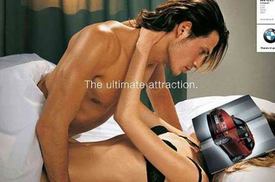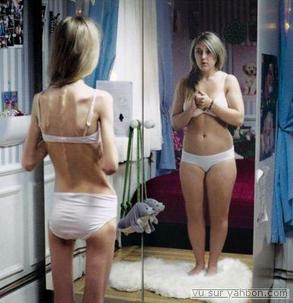HOW WOMEN ARE PORTRAYED

There is no doubt that advertisements are everywhere, in fact the average woman sees about 400 to 600 advertisements per day. (1) There have been numerous studies done on the scope of advertisements and how they depict men and women differently. It been found that sexuality in advertisement have continued to increase since the 1980’s. Also more female models as apposed to male models are suggestively dressed in these advertisements. In general interest magazines, men are less likely to be suggestively dressed than in 1984 and female models are more likely to be portrayed in decorative roles than are men, and less likely to be featured in more non-stereotypical or equal roles.(2)
It was also found that 28% of female models in television commercials had comments made about their looks, as apposed to male models that were commented on looks only 7% of the time. (3) Even in advertisements aimed towards children the difference can be seen. For example in a study that looked at Saturday morning toy commercials, it was found that 50% of commercials that were aimed at girls discussed physical attractiveness within the advertisement, while none of the commercials aimed at boys referred to appearance. (1) Many questions then arise as to how these commercials effect women and their body image.
It was also found that 28% of female models in television commercials had comments made about their looks, as apposed to male models that were commented on looks only 7% of the time. (3) Even in advertisements aimed towards children the difference can be seen. For example in a study that looked at Saturday morning toy commercials, it was found that 50% of commercials that were aimed at girls discussed physical attractiveness within the advertisement, while none of the commercials aimed at boys referred to appearance. (1) Many questions then arise as to how these commercials effect women and their body image.
EFFECTS ON WOMEN

- 69% of girls in one study said that magazine models influence their idea of the perfect body shape. (1)
- Exposure to the “ideal” body images has been found to lower women's satisfaction with their own attractiveness. (1)
- The average U.S. woman is 5’4” and weighs 140 pounds whereas the average U.S. model is 5’11” and weighs 117 pounds.
- 44% of women who are average or underweight think that they are overweight. (4)
- 30% of women chose an ideal body shape that is 20% underweight and an additional 44% chose an ideal body shape that is 10% underweight.(5)
- In a study 47% of girls were influenced by magazine pictures to want to lose weight, but only 29% were actually overweight. (1)
- Girls who were already dissatisfied with their bodies showed more dieting, anxiety, and bulimic symptoms after prolonged exposure to fashion and advertising images in a teen girl magazine. (1)
1. Eating disorders: body image and advertising . (2008, December 11). Retrieved from http://www.healthyplace.com/eating-disorders/main/eating-disorders-body-image-and-advertising/menu-id-58/
2. Carpenter, C., & Edison, A. (2005). Taking It All Off Again: The Portrayal of Women in Advertising Over The Past Forty Years. Conference Papers -- International Communication Association, 1-25. Retrieved from Communication & Mass Media Complete database.3.Statistics on women and media. (2005). Retrieved from http://www.mediareporttowomen.com/statistics.htm4. Rowland, H. (n.d.). Obsessed with thin: has the media gone too far?. Hilary Fashion, Retrieved from http://www.hilary.com/fashion/bikini.html5.Shocking statistics. (n.d.). Retrieved from http://www.colorado.edu/studentgroups/wellness/NewSite/BdyImgShockingStats.html
2. Carpenter, C., & Edison, A. (2005). Taking It All Off Again: The Portrayal of Women in Advertising Over The Past Forty Years. Conference Papers -- International Communication Association, 1-25. Retrieved from Communication & Mass Media Complete database.3.Statistics on women and media. (2005). Retrieved from http://www.mediareporttowomen.com/statistics.htm4. Rowland, H. (n.d.). Obsessed with thin: has the media gone too far?. Hilary Fashion, Retrieved from http://www.hilary.com/fashion/bikini.html5.Shocking statistics. (n.d.). Retrieved from http://www.colorado.edu/studentgroups/wellness/NewSite/BdyImgShockingStats.html
